Dogs have been with human kind for tens of thousands of years, possibly even longer. Canis lupus familiaris (the grey wolf is Canis lupus) has been found with human remains dating back at least 33,000 years. But this does not determine whether the animal was workmate, pet, or food. What it does indicate is that the dog has had at least a partial impact on the evolution of human-kind for quite some time.

For the Love of Dog
by LiamBean
October 4, 2016. This article explores the genesis of the domestic dog, how it may have become a domestic partner, and it's current status in society.
Evolution of the Dog
DNA testing of dogs in Japan has revealed that the gene sequences that define “dog” are up to 100,000 years old. The problem, for science at least, is that dog fossils have been found in human habitation areas in present day Germany, China, Japan, and Africa. Just because dog remains are found with or near human habitation does not mean the dog in question was a pet; they may, in fact, have been used as food.
Belgium: Fossilized dog bones were found in Goyet Cave in Belgium. These bones were found to be 33,000 years old and belonged to a very large dog that ate reindeer, oxen, and horses. Because the cave was also used by humans there is some indication of domestication, though that is tenuous at best.
France: In the Chauvet-cave in present day France petrified footprints were found of a canine walking alongside a child. Carbon 14 dating of plant material in the same strata revealed that they were at least 26,000 years old.
Siberia: A 33,000 year old dog skeleton was found in the Altai Mountains of southern Siberia. Its status as dog was confirmed with DNA testing which established that the bones were more dog than wolf.
Czech Republic: Dog bones dated back 27,000 years were found in a grave. The dog was buried with a mammoth bone in its jaws; perhaps to help it in the afterlife.
Germany: Other dog bones have been found in present day Germany dating to 14,000 years. The fossils were found among the remains of a prehistoric people buried at Germany's Bonn-Oberkassel site.
It is now generally accepted that dog as help-mate or companion occurred at least 14,000 years ago.
Theories on Domestication
That the dog was domesticated is one thing, how it happened another. Many theories abound and none have proved definitive. Still, because dogs have been domesticated, disappeared, and reappeared it might just be possible that some form of each theory is true under different circumstances at discrete times.
The Passive Scavenger Scenario
Unlike wolves, dogs can easily digest starches. This has lead some researchers to theorize that wolves evolved to digest human refuse and, over time, slowly became dog-like. This still does not answer the question about the type of domestication. Perhaps the wolf-dog was simply taking advantage of nearby humans, perhaps the wolf-dog was captured coming too close to human habitat and subsequently domesticated, or there is the possibility that the wolf-dog, with the potential food reward, allowed itself to be taken into the human family.
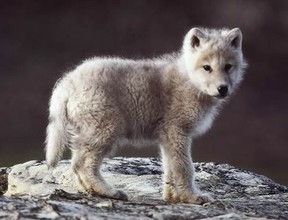 Adopted Orphans
Adopted Orphans
A competing theory has humans domesticating orphaned wolf cubs. The wolf, like the dog, is instinctively tuned to a family environment. It can easily substitute humans as proxies for adult wolfs. Because wolves are attuned to highly structured hierarchies of families, it is proposed that wolf cubs were easily assimilated into human culture.
Active Scavenger Helper
My personal thought is that maybe the dog was used as an aid to finding recent carnivore kills. Ancient humans were almost certainly able to observe that the wolf-dog had a better sense of smell; that it locate meat in the form of recent kill.
Carnivores, like the big cats or bear will make a kill, but neither is capable of eating all of its prey. In cases like this, the apex predator would cover its kill so it could return to it later. It is not beyond the realm of possibility that early humans supplemented their diets by scavenging recent kills. With a dog’s keen sense of smell it could certainly locate a kill much more easily than a human could. Additionally, a pack of domesticated dogs might serve as guard should the apex carnivore return. This way the wolf-dog served as both early warning and defense should a confrontation occur.
Perhaps, over the course of time, early humans captured and attempted to domesticate the wolf-dog in order to take advantage of these senses.
Domestication Requirements
It isn’t enough to “adopt” an animal; that isn’t what makes it domestic. It can live with humans and still fundamentally be wild. What makes the dog different is that in many ways it is now dependent on humans for survival, though larger dogs would likely do just fine without human co-habitation.
Dog Characteristics that Wolves do not Share
- wolves do not bark; yes, wolves howl, growl, and make other canine sounds
- dogs bark and make the other wolf-like sounds as well
- wolves have a short digestive tract ideal for meat
- dogs have much longer digestive tracts, ideal for digesting starches as well as meat
- a wolf’s snout makes an almost continuous line from the tip of the nose to the top of the head
- the dog has a very pronounced “stop” between the snout and head
- the wolf’s tail is used to help stabilize her while running, as a display of dominance or submission, and as a sign of recognition; it does not curl over the back
- a dog's tail can curl over the back
- dogs can have "floppy ears;" wolves typically do not
- dogs are also more prone to “tail wagging” than the wolf
- a dog’s fur is also distinctly different than the fur of the wolf in that it can be multicolored
- a wolf’s coat is typically one color with shading
The Russian Fox Studies
Since the fox is also a canid, a relative of the dog and wolf, a Russian scientist set about to try to determine how canids could be domesticated. His results are astounding. In less than fifty years he has bred a fox that is very dog-like, so much so that they are now for sale as companion animals.
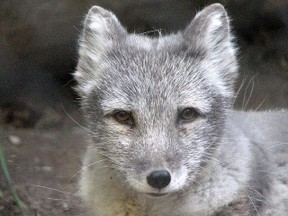 Test Parameters
Test Parameters
In 1948 scientist Dmitri Belyaev, after losing his job with the Central Research Library of Fur Breeding in Moscow, began experimenting with the red fox. He wanted to know what would happen if you kept and bred foxes that showed reduced fear of humans.
Belyaev believed that the differences between the wolf and the domestic dog had something to do with human interaction. This meant that the dog has to be “tame” or at least more tolerant of a human presence than a wild fox. To that end he kept foxes that displayed a tolerance of humans and released those that showed fear.
The Experiment
At one month of age the foxes were tested for their reactions to humans. Every month throughout infancy the foxes were tested for their friendliness toward humans. In the test, the experimenter would attempt to pet and handle the fox while feeding it. If the fox accepted the handling without attempting to flee or bite, the fox was given a high score. Based on the scoring system, only the friendliest foxes were kept for Belyaev’s breeding program.
Breeding Cycles
This program was conducted for forty breeding cycles. The result was a fox that was much more willing to be around humans, whimpered to get a human’s attention, licked and sniffed their human companion's hands, and wagged their tails to show a contented state. None of these behaviors are common to the wild fox.
Additionally, these “domesticated” foxes were less likely to display a startle response to new situations and were much more likely to display curiosity. Testing also showed that these domesticated foxes produced less adrenaline.
Physical Changes
Belyaev’s foxes also displayed some very definite physical changes over the course of the breeding program. More were born with floppy ears, shorter tails or tails that curled over the back. Changes in fur coloration, larger skulls, and changes to their jaws and teeth were also noted. These are all hallmarks that we associate with dogs.
Domestication Hypothesis
These experiments have lead Belyaev and others to the tentative conclusion that one way to domesticate a wolf and end up with a dog is via a breeding program extending one or two human lifetimes, that selects for nothing more than tameness. In fact, Belyaev produced a domesticated fox in just under ten years.
By breeding for tameness and calm Beyleyv produced foxes with varied coat color, floppy ears, curly tails, and the ability to vocalize like dogs.
Belyaev Fox Studies
The Dog – Human Interaction
Dog descendants would find life with humans very beneficial.
There is more safety, a reliable source of food, and more chances to continue its line breeding in the company of humans. Because of human’s proficiency at hunting the dog would have a much better diet than one living in the wild. Humans would have also extended the dog’s hunting range and a dog would benefit from a human’s ability to see in color, an advantage in spotting game during daylight hours. Dogs might also have benefited from human’s ability to use tools such spears and knives. These two tools make killing from a distance and extracting better 'cuts' of meat possible.
Humans would also benefit from the dog’s presence. Dogs, in eating scraps, would keep the human encampments much cleaner. Dogs may also have provided additional warmth to humans when both were sleeping. They would have been able to alert human companions to dangers humans could not immediately detect. Such dangers might be other humans approaching an encampment or carnivorous animals approaching human habitats.
Over time, humans would find that taking advantage of a dog’s natural hunting instincts could be used to herd goats, sheep, and other cattle. Humans would find that a dog’s hunting instincts could also be taken advantage of in the help of hunting larger prey like deer, boar, or even other carnivores.
There are even some anthropologists who believe, firmly, that human evolution would not have occurred quite the way it did without the dog.
The Dog as Pet
The dog as a pet is very probably a recent development. It is very likely this is a development in the relationship that is no more than five hundred years old. However, the fox studies, mentioned above, indicate that at least one side of the relationship was much more an emotional attachment than that of mere human helper.
Dogs have a longer history as pet with the wealthy. Where many people kept dogs as shepherds or other forms of work dog, the rich or royalty would keep dogs strictly as companion animal.
As incomes rose and social equity became more widespread, pets became more prevalent and popular.
Even in this regard there have been changes. In the fifties Americans typically kept their dogs outside, often in a special structure called a “dog house.” Though these are much less popular today, many dogs remain strictly outside animals.
Growing up, our family dogs, Collies, were kept outdoors unless it got really cold. It was a special treat to allow “Lassie” to come inside and play. I have fond memories of rolling around in the yard playing “got you” or “keep away” with my dog.
Today dogs have special places in the home. Dogs now have boutiques, special clothing, and specialized stores for grooming, and so on.
Dog Studies
Detecting Human Emotion
Tests similar to those conducted on humans have been extended to dogs. In one study scientists wanted to know where the dog's gaze fell when viewing certain items. A video camera was set up so as to capture where dogs looked when presented with images on a screen just above the camera.
Dogs were then presented with images of other dogs, inanimate objects, and human faces.
Much to everyone's surprise dogs look at the right side of human faces. Humans have a "left bias" too. Dogs do not do this with other dogs or inanimate objects. The conclusion drawn is that dogs look at human faces in order to detect the emotional state of those humans.
Pleasure in the Company of Companions
Another study set out to determine if dogs actually derive pleasure from human companionship. The test was pretty simple; allow a dog and his/her human to interact and then draw blood samples and look for certain hormones.
Blood samples revealed that both human and dog experience a spike in the release of oxytocin, a hormone linked with pleasure and calm. This hormone is also linked, in humans, to breast-feeding, intimate relations, and child-birth.
Our Commitment to the Dog
Considering that we have spent millennium making the dog what it is today we owe it more than “casual amusement” out of boredom. Our ancestors spent lifetimes bending the dog’s nature to fit our needs. In the process we have made canine at least partially dependent on us. If we truly love this loyal mammal we should prepare to give at least it’s lifetime of devotion.
Too often people get a dog not knowing what it entails and “throwing it away” when the dog does not meet their expectations. Then there are the cases where the dog is abandoned when it becomes “too old.” Would you do that to grandma or grandpa?
A dog, like any mammal, goes through a life cycle similar to our own. They have infant, adolescent, teenaged, mature, and elderly stages, just like we humans. Just as with humans, older dogs can have expensive health problems and require more time to care for. The good news is no matter how sick a loving dog will continue to show you affection no matter how sick they are.
Coda
Though we still don't know if the dog became domesticated 14,000 years ago or 33,000 years ago there is no longer any question that we succeeded in creating an entire new class of animal. One that is at least partially dependent upon us and, at the same time, intensely loyal to us. Any problem what we have with the dog is a problem we humans have created. Dogs do not, by their nature, view humans as enemy, they have to be trained to see us that way. As a relative of the wolf, fighting other dogs to the death is also an alien concept to a dog. Establishing dominance is often a matter of standing over the inferior and that is all.
Wolves and dogs alike are geared toward existing within a family unit or tribe. The only time a dog will naturally attack another is if they are from different families and even then it rarely leads to a death. To attack another dog to kill is something that must be taught to it by humans.
In all cases where a dog has attacked a human there has been a human problem at the heart of that attack. So why do we punish the dog?
You might also like
Are Border Collies Really the Smartest Dog Breed?Border Collies are renowned for intelligence, excelling in obedience and task...
Best Dog Breeds for ChildrenHere are some thoughts about the best dogs for children by a dog trainer and ...
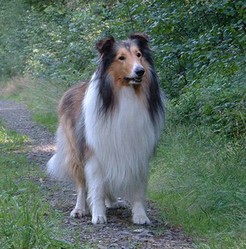

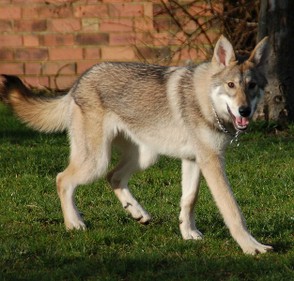
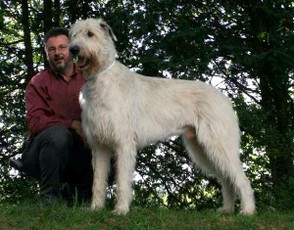
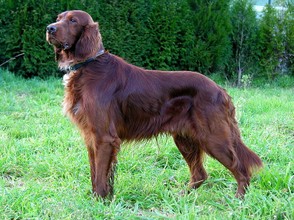
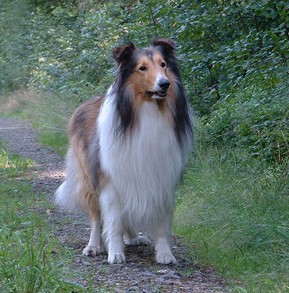








 Crêpes and Crêpe Disheson 09/14/2016
Crêpes and Crêpe Disheson 09/14/2016
 About Me - Liam Beanon 11/28/2014
About Me - Liam Beanon 11/28/2014
 About Ebolaon 11/08/2014
About Ebolaon 11/08/2014

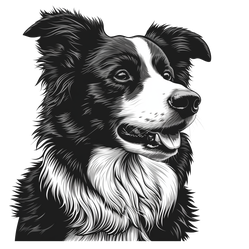

Comments